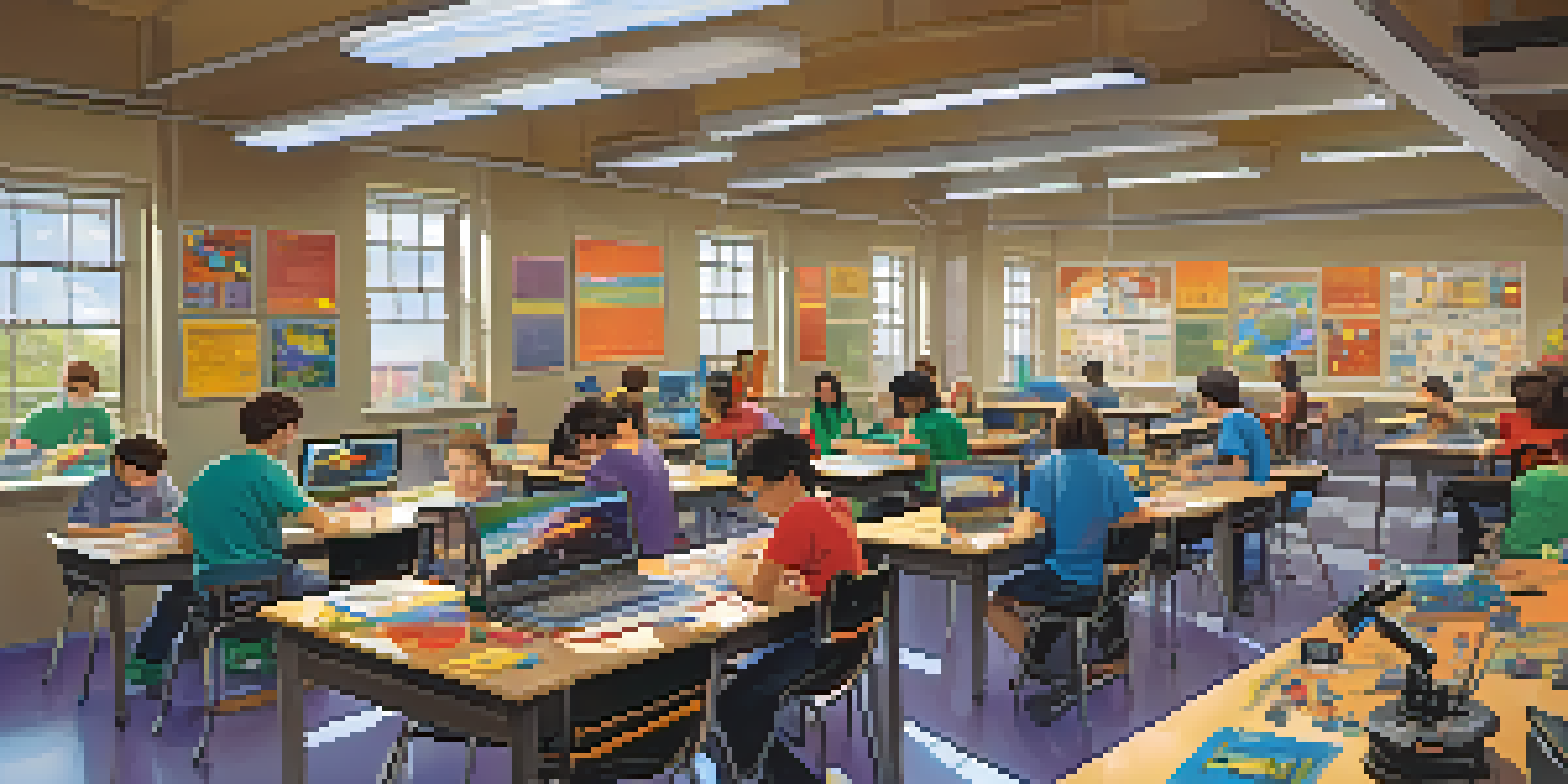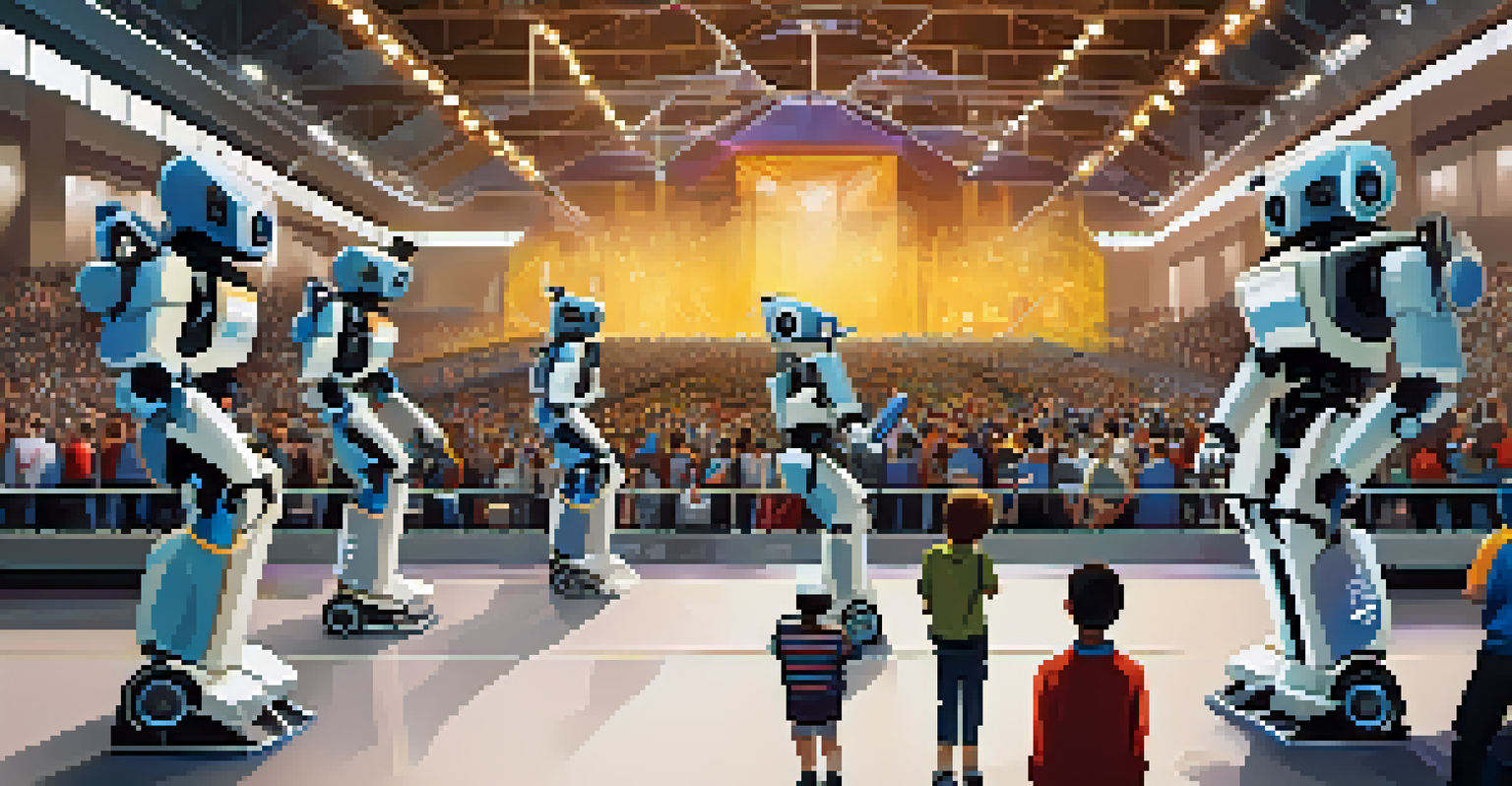Integrating Robotics into STEAM Education: A Framework

Understanding STEAM Education and Its Importance
STEAM education, which stands for Science, Technology, Engineering, Arts, and Mathematics, encourages a holistic approach to learning. By integrating these disciplines, students gain a richer understanding of how subjects interconnect. This method not only fosters critical thinking but also sparks creativity, preparing learners for real-world challenges.
The future belongs to those who believe in the beauty of their dreams.
In today's technology-driven society, having a foundational grasp of STEAM subjects is essential. It equips students with skills that are highly sought after in various careers, from engineering to creative arts. Additionally, STEAM education promotes innovation, encouraging students to think outside the box and develop solutions to complex problems.
Integrating robotics into STEAM amplifies these benefits, providing hands-on experiences that make learning more engaging. By working with robots, students can apply theoretical knowledge in practical settings, solidifying their understanding and boosting confidence in their skills.
The Role of Robotics in Enhancing Learning Experiences
Robotics serves as a dynamic tool in the classroom, transforming abstract concepts into tangible experiences. When students build and program robots, they actively participate in their learning process, which enhances retention and comprehension. This interactive approach often leads to increased motivation and enthusiasm for STEAM subjects.

Moreover, robotics encourages collaboration among students. Working in teams to design and troubleshoot robotic projects fosters communication skills and teamwork, essential competencies in any career. This collaborative spirit mirrors real-world environments where diverse skills and perspectives are invaluable.
Additionally, robotics promotes problem-solving skills. Students encounter challenges while building and programming their robots, which require critical thinking and persistence to overcome. This iterative process of trial and error teaches resilience and adaptability—key traits that benefit learners in all areas of life.
Creating a Framework for Robotics Integration in Education
To effectively integrate robotics into STEAM education, a structured framework is essential. This framework should outline clear objectives, ensuring that both educators and students understand the goals of the integration. Setting expectations from the start can streamline the learning process and enhance outcomes.
Education is not the filling of a pail, but the lighting of a fire.
The framework should also include an assessment strategy to gauge student progress. Regular check-ins, project evaluations, and peer feedback can provide insights into how well students are grasping concepts and applying their skills. This ongoing assessment helps educators adjust their teaching methods to better meet students' needs.
Finally, professional development for educators is crucial. Teachers need the necessary training and resources to confidently incorporate robotics into their lessons. By investing in teacher training, schools can ensure that educators feel empowered to guide students through the exciting journey of robotics in STEAM.
Choosing the Right Robotics Tools and Resources
Selecting appropriate robotics tools is vital for successful integration into STEAM education. There are various options available, from simple kits for younger students to more complex systems for advanced learners. It's important to choose tools that match students' skill levels and curriculum objectives, ensuring an engaging learning experience.
Additionally, educators should consider the availability of resources and support for the chosen tools. Many robotics platforms offer extensive online resources, including tutorials and community forums, which can greatly assist both teachers and students. This support can help troubleshoot issues and inspire innovative project ideas.
Finally, incorporating a variety of robotics tools can cater to different learning styles and interests. For instance, some students may thrive with hands-on building kits, while others may excel in programming. Providing diverse options can enhance engagement and allow students to explore their unique strengths.
Engaging Students Through Robotics Competitions
Robotics competitions are a fantastic way to engage students and inspire a passion for STEAM subjects. These events encourage teamwork, creativity, and critical thinking, as students collaborate to design and program robots for specific challenges. The excitement of competition can significantly enhance student motivation and commitment to learning.
Participating in competitions also fosters a sense of community among students. They share experiences, learn from one another, and celebrate achievements together. This camaraderie can lead to lasting friendships and connections that extend beyond the classroom.
Moreover, competitions often provide opportunities for students to showcase their skills to a broader audience. This exposure can boost their confidence and ignite interest in pursuing careers in STEAM fields. By participating in robotics competitions, students gain valuable experience that can shape their future endeavors.
The Impact of Robotics on Teacher Development
Integrating robotics into STEAM education not only benefits students but also has a significant impact on teacher development. As educators engage with new technologies, they enhance their own skill sets, becoming more proficient in teaching complex concepts. This professional growth is essential in keeping pace with an ever-evolving educational landscape.
Additionally, teachers benefit from collaborating with colleagues who are also integrating robotics into their classrooms. Sharing experiences and best practices can lead to innovative teaching strategies and improved student outcomes. This collaborative environment fosters a culture of continuous learning among educators.
Ultimately, as teachers become more confident in their use of robotics, their enthusiasm can inspire students. A passionate educator can ignite curiosity and foster a love for learning, encouraging students to explore STEAM fields further. This ripple effect can create a vibrant learning community focused on innovation and exploration.
Future Trends in Robotics and STEAM Education
As technology advances, the integration of robotics in STEAM education will continue to evolve. Emerging trends such as artificial intelligence (AI) and machine learning are paving the way for more sophisticated educational tools. These advancements will likely enhance student engagement and create even more immersive learning experiences.
Moreover, the focus on coding and robotics is expected to grow, with an increasing number of educational institutions incorporating these subjects into their curricula. This shift reflects the demand for tech-savvy individuals in the job market, emphasizing the importance of preparing students for future careers.

Finally, community partnerships will play a crucial role in the future of robotics in education. Collaborations with local businesses, universities, and tech companies can provide students with real-world experiences and resources. By bridging the gap between education and industry, we can ensure that learners are equipped with the skills they need to thrive in an ever-changing world.